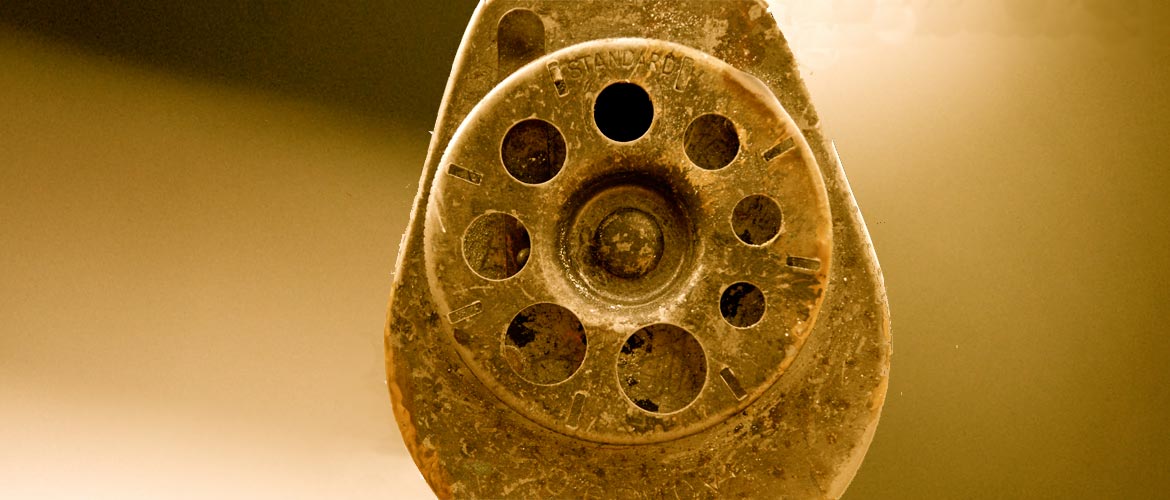 A few weeks ago, comedian and former political cartoonist David Rees was explaining to me that he wanted to celebrate something we do all the time and don’t think about.
A few weeks ago, comedian and former political cartoonist David Rees was explaining to me that he wanted to celebrate something we do all the time and don’t think about.
The topic of our conversation was Rees’s book, How to Sharpen Pencils. It in, he treats that simple act as an art, if not a science, with writing that harkens back to the literary utilitarian style of mid-century instructional and technical manuals. (The accompanying black-and-white photography by Meredith Heuer is nothing short of stunning.)
For me, though, How to Sharpen Pencils also performs a public service, by restoring lost luster to my favorite writing instrument. Face it, pencils have as much positive connotation as a gypsy curse.
They provoke such memories as gnawing on a #2 all the way through the SAT; watching your teacher mark up your essay in bright red scrawls; and avoiding the gaze of desperate men holding their Depression-era tin cups.
And then there’s the personal bane of my existence, pencil sharpening in the service of procrastination.
“I think if you have a good quality pencil and a good pencil sharpener and you know what you’re doing sharpening the pencil can be very satisfying,”
No one asks a pipe smoker why he (and here I use the pronoun on purpose) must spend hours cleaning the bowl, drying out the stem, tamping down the tobacco mixture, only to repeat the process multiple times before ever touching flame to tobacco—if, indeed, that moment ever comes.
Instead we associate pipes with slippers, a silk robe, a leather chair, and a golden retriever named Rusty.
A pencil user who engages in a similar ritual is, instead, cited for violating one of the seven deadly sins (Hint: it’s not gluttony).
Rees’s book changes all that, for it is the work of a man who understands the critical role of the pencil in society.
“When I quit cartooning I ran out of money so I got a job with the 2010 Census,” Rees said. “All those Census forms are filled out in pencil.”
No pencils, no census. No census, no congressional districts. No congressional districts, no gerrymandering. American institutions we all hold dear are dependent upon properly-functioning pencils. Perhaps that’s why the government puts so much emphasis on their preparation.
“On the first day of staff training, we all sat around sharpening our pencils.” Rees said.
Watching his fellow workers struggling with what had become a vanishing skill, Rees had an epiphany. “I thought it would be cool to get paid to sharpen pencils.”
That led him to embark upon the book and a post-census career as an artisanal pencil sharpener.
“At first, it was just my friends who wanted to support me and be nice.” But after a few magazine articles and TV segments, Rees discovered a whole subculture of closeted pencil point worshippers.
“Some people would place an order just to see if it was a real thing,” Rees said. “But, I did graduation gifts, lucky SAT pencils, and a fair amount of retirement gifts for librarians and teachers.” Many more pencils, Rees suspected, were ordered as conversation pieces.
Rees took his job seriously. For a $15 fee (later raised to $40), he returned each pencil in a plastic tube to protect the geometrically, and aesthetically, perfect point, collar (the cone-shaped area below the graphite point), and collar bottom (where the collar meets the unsharpened part of the pencil’s body).
Rees also returned the wood shavings he removed during the sharpening process. “They rightly belong to the owner,” Rees pointed out. “It would be unethical for me to keep them.”
Satire aside, pencil sharpening has meditative qualities similar to, say, petting a service dog.
“I think if you have a good quality pencil and a good pencil sharpener and you know what you’re doing sharpening the pencil can be very satisfying,” Rees said.
And it’s not only pencil sharpening.
There’s a meditative quality in seeking perfection in all sorts of everyday tasks. So many, that Rees’s book spawned a television show called Going Deep with David Rees (on the National Geographic channel).
It’s a labor of love for Rees who, apart from his satirical side, has a genuine appreciation for the everyday.
“Those things are really important to me,” Rees said. “The night before the first day of school, my mom would take me to the store and we would buy erasers and pencil cases and brand new notebooks and lay it all out and be very fastidious and organized. It’s a fun feeling.”
The everyday is our complex world’s built-in antidote for the stress of complexity.
With How to Sharpen Pencils, Rees makes that point.
Start your Sunday with a laugh. Read the Sunday Funnies, fresh humor from The Out Of My Mind Blog. Subscribe now and you'll never miss a post.
David Rees is a comedian, former political cartoonist, television host and, of course, artisanal pencil sharpener. Although he’s had to phase out of his pencil sharpening career to attend to his television show, Going Deep with David Rees (Nat Geo channel), he still harbors an affection for pencil sharpening and other overlooked, everyday tasks. His cartoon work has appeared in Rolling Stone, GQ, The Nation, Harper’s, and many other publications.
Mind Doodle…
Why are number 2 pencils the standard for taking standardized exams? Higher numbered pencils produced marks that were too light for the original scanning equipment to reliably detect. Number 1 pencil marks smudged too easily and confused scanners. Number 2 pencils were just right, giving us a fairy tale ending.

I’m with Jackie. The electric pencil sharpener does the trick and it goes back to the pre personal computer days of interactive video, when we needed electrically sharpened pencils, electric erasers, and all kinds of templates to diagram and re-diagram and re-diagram all those branching scenarios.
Hi Nick…
I can just imagine walls full of branching charts. Although, that does give visitors the impression that something is getting done. Somehow, a clean desk with an iPad on it doesn’t convey the same impression.
I’ve never been a big fan of electric pencil sharpeners. I probably have never owned a good one. It’s a moot point, though, since it’s difficult to use one in Starbucks without attracting nasty stares.
I use a two-step, handheld, long point sharpener that gives me great results. I got the idea from Rees’s book.
— jay
I adore pencils. Just thinking about sharpening one conjures up one of my favorite aromas. Funny how computers do not have aromas – a great pity and loss, I believe. I have hundreds of pencils and will sometimes spend an hour making sure they are all sharp. I admit I have resorted to the electric pencil sharpener over the ones mounted on the walls (that often fell apart with messy consequences), but the smell is still there and I sniff each newly pointed pencil as it emerges from the sharpening hole.
Hi Jacki…
I thought that missing aroma was why you were working on the Scent Collar. Maybe you can build a small USB stick that dispenses a pencil aroma when using a word processor.
That wood-pencil smell, by the way, comes from California incense cedars, the most popular trees used in pencil manufacturing. The trees naturally grow in the inland forests of central and Northern California (and parts of Southern Oregon).
— jay